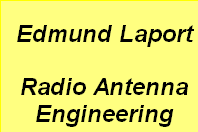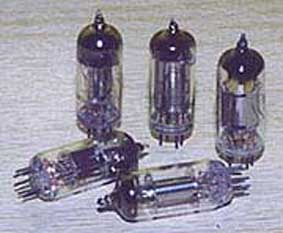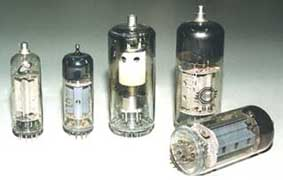


Antentop is FREE e-magazine devoted to Antennas and Amateur Radio an
Special page devoted to
Vacuum Tubes

Custom Search
|
ANTENTOP-
03- 2003, # 004
|
Vacuum Tubes
|
||
|
|
|||
| Battery valves
with the Heptal base. Have 1,1 (2,2) V
direct heating. Home produced tubes are known from end 1940's and
were installed both in table-top (the "Rodina-52") and portable battery powered radios. Photo shows
valves: 2P1P, 1A2P, 1B2P, 1K1P, 2P2P. |
The home-produced
TV valves with the Magnoval base. Not used in R-sets. On the photo:
6D22S, 6P41S, GP-5, 6P45S, 6P42S.
|
||
|
FROM THE AUTHOR We have seen with our
own eyes the eclipse of the whole epoch - the epoch of the Soviet
Union. And somehow imperceptibly the things of our common surrounding
became pieces of antique. It seems quite recently thatwe tried
persistantly to get rid of bulky valve radio receivers and buy
light and portable "transistors" instead. Generations
change in technology but even now who of the people over 35 does
not feel nostalgic of the scale and the "green eye"
of an old radio gleaming in the darkness... I have a feeling I was interested in old radios through all my life.May be it is genetic memory? My grandfather, a journalist by education, took a great interest in radio broadcasting in 1930's. He was also an active listener.I remember him sitting at the radio set trying to tune in some DX station through the mess of statics. It was my grandad who gave me my first radio set as a present in early 70's. It was a big and heavy multy-band set trying to tune in some DX station through the mess of statics.
It
was my grandad who gave me my first radio set as a present in
early 70's. It was a big and heavy multy-band set in a wooden
cabinet model "October". Frankly, I was only 7 then and it did not become
the first piece of my collection - after some time it was lost.
My present collection is about 3 years
old.A receiver of the same model as my very first one is most
precious to me. Besides some radios made in this country in 1930-50's
I also have some R-sets produced by Phillips, Mende, Tefag ,
RCA. A radio of direct amplification
"EKL-34" made in Leningrad in 1934 is the oldest of them all. |
Unfortunately it
does not work now because of wasting of the materials, of which
resistors and caps are made. In case of need I reconstruct my
radios carefully. Fortunately, we can
still find here old spare parts and materials to use them for
restoring. Working with my collection brings me a kind of energy.Every
R-set was some time "a favourite of the family" and
the spirit of old times hides under every chassis and revives
in the soft radiation of the tubes. The idea of making a homepage reflecting my collection has come to me in the summer of 1998. And since then the volume of information on the site has been increasing and the design of the pages has changed not once (for the better, I presume). For over a year I have attained a kind of an "intermediate finish": now on the pages those interested can find not only the photos but also the diagrams and technical data of all the radios included in the site. In the halls of the virtual gallery the music of those half-forgotten years can now be listened to. "The Tube Souls" forum is open on the site that (I hope) will become a place of contacts between valve radio fans and collectors. Marking the virtual museum with a special award of the biggest Russian site on museums www.museum.ru was a pleasant result.
|
||
|
|
|
||
|
Page 99 |
|||
 |
 |
 |
 |
Just for Fun:

Powered byIP2Location.com
Thanks for your time!
Last Updated:
February 29, 2020 23:16






